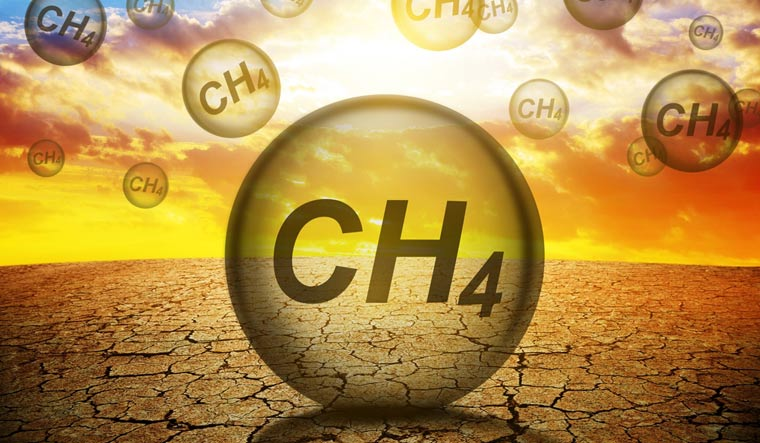Description

Disclaimer: Copyright infringement is not intended.
Context:
- Research in the Institute for Global Change in Japan has found various aspects of methane emission and subsequent global warming.
Details and findings:
- During 2019-2020, these researchers examined the concentration of methane in the atmosphere and how it changed with time.
- Until the 1990s, the concentration increased, then stabilized for a bit, and then started to increase again around 2007. According to recent estimates, the atmospheric concentration of methane today is three times what it was 300 years ago.
- The models prepared by them said methane emissions from fossil fuels declined between 1990 and the 2000s and that they've been stable since.
- The study reported that microbes have been the biggest sources of methane in the atmosphere, not the burning of fossils.
The reason cited by them for an increase in methane:
- Increase in cattle-rearing in Latin America and more emissions from waste in South and Southeast Asia, Latin America, and Africa.
- They added that the number of wetlands worldwide had increased as well.
The sources of methane
- Scientists are increasingly recognising various sources of methane, most of which fit in two categories: biogenic and thermogenic.
Thermogenic source
- When fossil fuels such as natural gas or oil are extracted from deep within the earth's crust, thermogenic methane is released.

Biogenic source
- Biogenic methane comes from microbial action.
- The microbes that produce methane are archaea - single-celled microorganisms distinct from bacteria and eukaryotes - and are called methanogens. They thrive in oxygen-deficient environments, such as the digestive tracts of animals, wetlands, rice paddies, landfills, and the sediments of lakes and oceans.
- Methanogens play a crucial role in the global carbon cycle by converting organic matter into methane. While methane is a potent greenhouse gas, its production by methanogens is an essential part of natural ecosystems. But human activities like agriculture, dairy farming, and fossil fuel production have further increased methane emissions.
How to track the fossil fuel:
- Both biogenic and thermogenic activities produce different isotopes of methane. Tracking the isotopes is a way to track which sources are the most active.
- If there are fewer carbon-13 atoms than a certain level in a group of 1,000 methane molecules, the methane is from a biological source. If the methane is from thermogenic sources, such as trapped fossil fuels or geological activities, there will be more carbon 13 atoms in 1,000 molecules.
About Methane
- Methane is the second most abundant anthropogenic greenhouse gas after carbon dioxide (CO2) but it warms the planet more.
- Over a century, methane has a global warming potential 28 times greater than CO2, and even higher over shorter periods like two decades.
Global pledge:
- It wasn't until recently that policymakers began to focus on methane vis-a-vis addressing global warming.
- At the U.N. climate talks in 2021, member countries launched the 'Global Methane Pledge' to cut gas emissions and slow the planet's warming.
Conclusion:
- To reduce methane, anthropogenic activity such as Waste and landfills, rice fields, enteric fermentation, oil and gas, and coal, etc, should be first controlled.
Source:
https://epaper.thehindu.com/ccidist-ws/th/th_international/issues/81450/OPS/GF9CO8MKP.1.png?cropFromPage=true
|
PRACTICE QUESTION
Q)Consider the following statements regarding methane and its sources:
- Biogenic methane is primarily produced from the extraction of fossil fuels such as natural gas or oil.
- Methanogens, which produce biogenic methane, thrive in oxygen-rich environments.
- Both biogenic and thermogenic activities produce different isotopes of methane, allowing for tracking of methane sources.
- Methane has a global warming potential over a century that is approximately 28 times greater than carbon dioxide (CO2).
- Methane's warming potential remains constant over different time scales, such as over a century and two decades.
Which of the statements are correct?
a) 1, 3, and 4
b) 2, 3, and 5
c) 3, 4, and 5
d) 1, 4, and 5
Correct Answer: c)
|
















